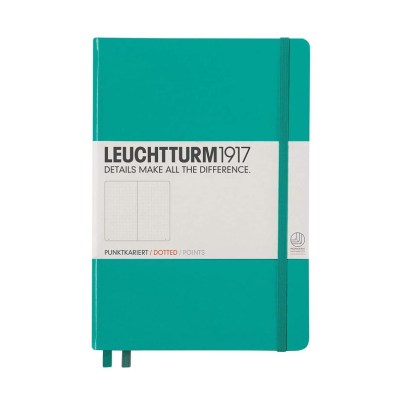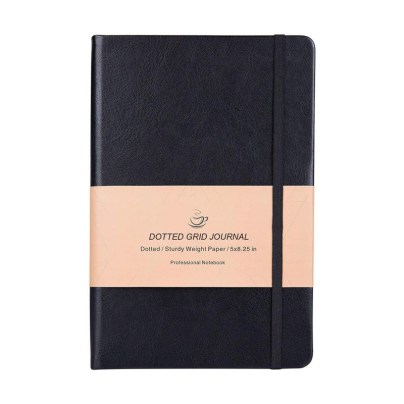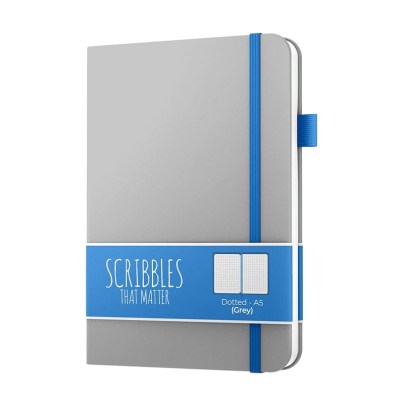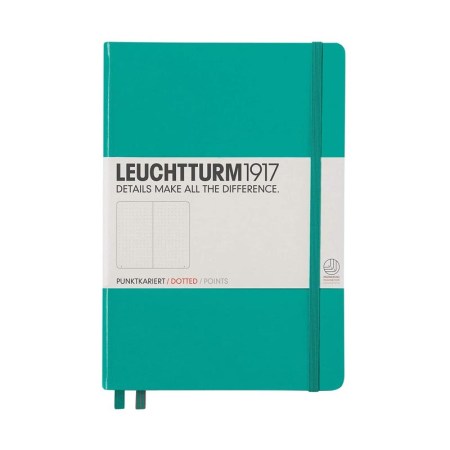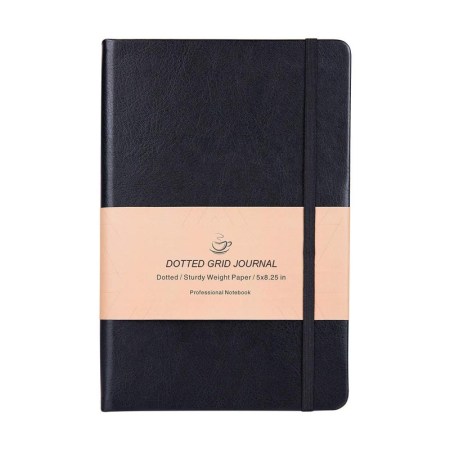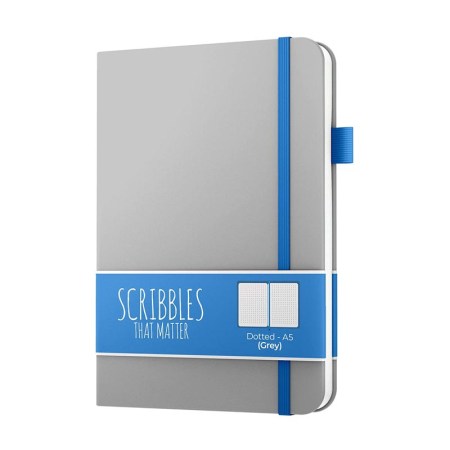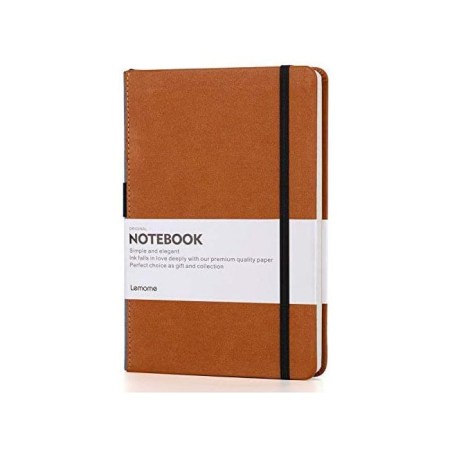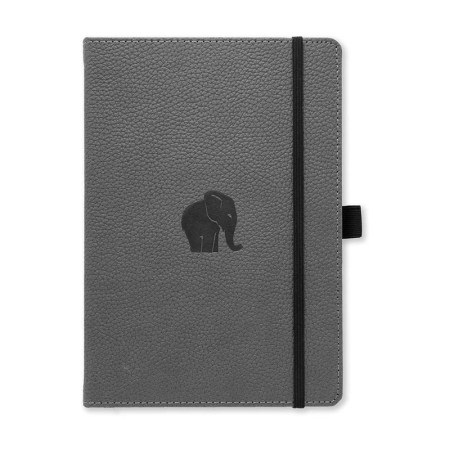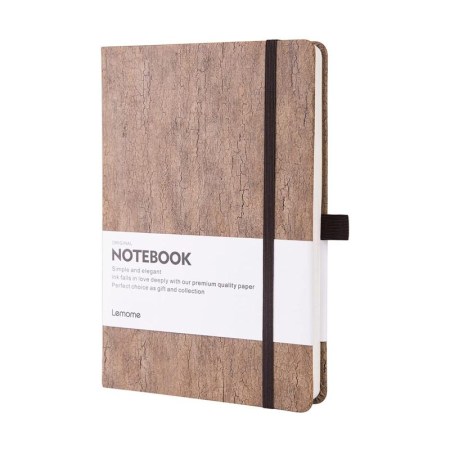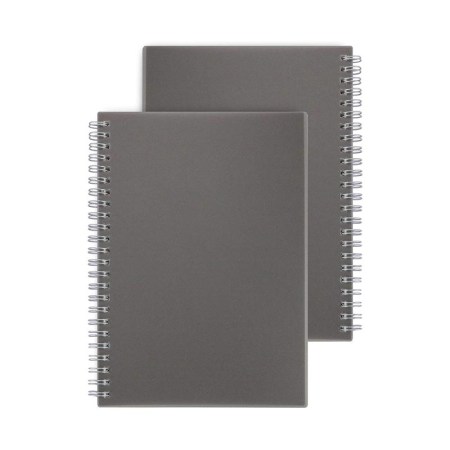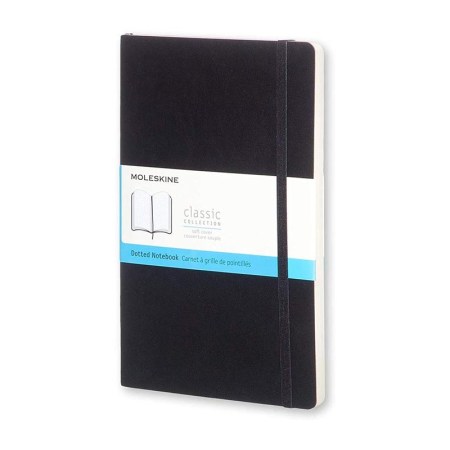We may earn revenue from the products available on this page and participate in affiliate programs. Learn More ›
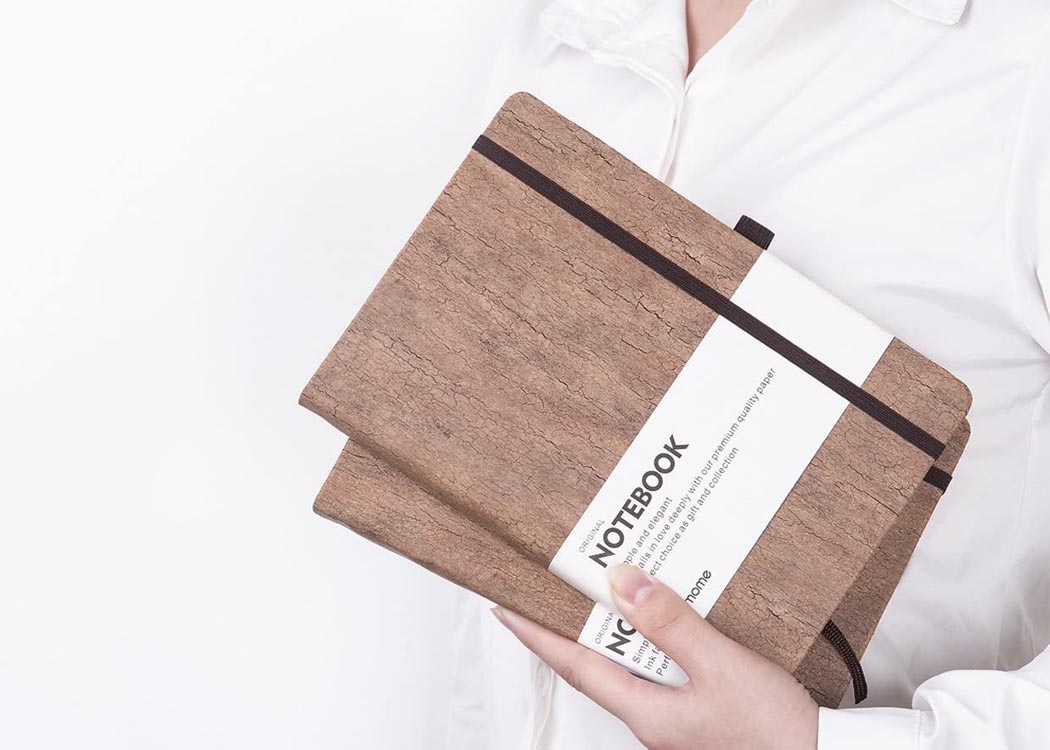
Bullet journals harness the power of creativity to customize how you organize your life. Their empty pages can contain everything from a daily, weekly, and monthly calendar to weight loss goals, menu plans, and notes of gratitude, all in one place. The design and planning may be up to each individual user, but the paper, layout, and size make a difference in how they function. The best bullet journals have more than just blank pages―they can include a built-in index, numbered pages, and storage pockets to add functionality and spark your organizational imagination.
This shopping guide will provide an overview of what features bullet journals offer to help you start creating, developing, and keeping your plans as soon as possible.
- BEST OVERALL: Leuchtturm1917 Medium A5 Dotted Hardcover Notebook
- BEST BANG FOR THE BUCK: URSUNSHINE Dotted Grid Notebook/Journal
- BEST FOR BEGINNERS: Scribbles That Matter A5 Dotted Journal
- BEST FOR ARTISTS: Lemome Dotted Bullet Grid Journal
- BEST FOR ANIMAL LOVERS: Dingbats Wildlife Dotted Hardcover Notebook
- BEST WITH TEAR-OUT PAGES: Lemome Dotted Bullet Notebook/Journal – Eco-Friendly
- BEST SPIRAL BOUND: Miliko Dark Transparent Hard Cover A5 Dot Grid
- BEST SOFT COVER: Moleskine Classic Notebook, Soft Cover, Large Dotted
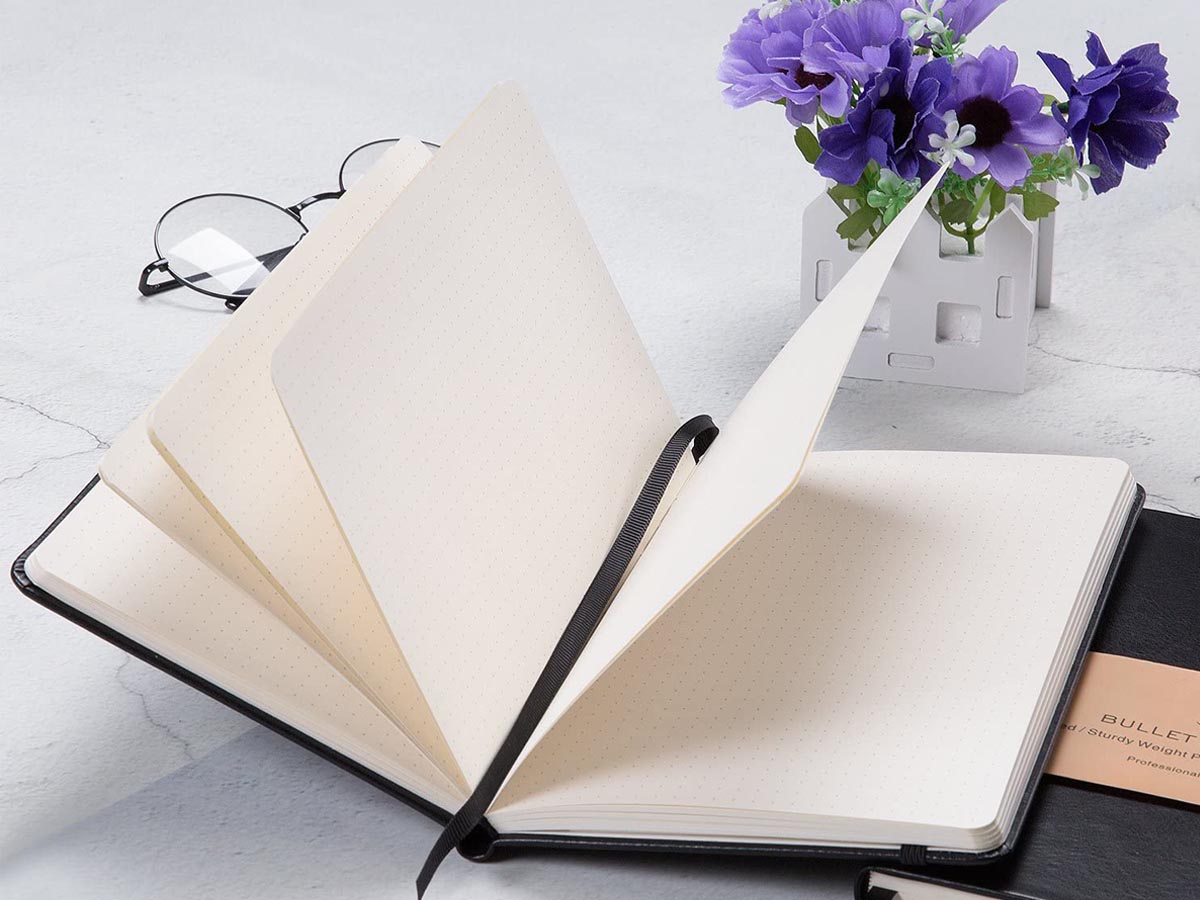
What to Consider When Choosing the Best Bullet Journal
Bullet journals come in the most basic blank-page designs or with pre-printed pages that require very little setup on your part from the start. Beginners will probably be happiest with a journal that at least has numbered pages, while artists may want a completely blank canvas to allow their vision to come to life.
Size
Bullet journals generally come in four sizes:
- B5: 7 by 10 inches
- A4: 8¼ by 11¾ inches
- A5: 6 by 8¼ inches
- A6: 4 by 6 inches
The A5 is one of the most popular sizes because it’s big enough for visible monthly spreads but small enough to carry around. However, for those who like big spreads, a B5 offers a full-size notebook that’s great for use on a desktop. Minimalists may not need as much space and may be perfectly happy with an A6.
Since almost any journal can function as a bullet journal, there are a few other sizes to be aware of, including:
- Cahier: 5 by 8¼ inches
- B6: 5 by 7 inches
- A7/Micro: 3 by 4 inches
These sizes aren’t as common, but might be ideal based on the size of your purse or briefcase.
Paper
As any bullet journal lover will tell you, the paper’s weight, type, and color make a huge difference in the feel of the journal and the appearance of the end designs. Paper is measured in grams per square meter (GSM): The higher the GSM, the heavier the paper. Heavier papers—between 120 to 160 GSM—can handle watercolor and markers. However, 60 to 80 GSM paper is more standard and can handle some mixed-media tools without too much buckling. And it doesn’t generally bleed or ghost, meaning you shouldn’t see the ink on the opposite side of the paper.
Papers also come in different colors, ranging from brilliant white to yellow. Color is a matter of preference: Artists may prefer white paper because the colors from markers, pencils, pens, and paints won’t get altered by the paper’s color.
Journals with perforated pages let the artist discreetly tear out any pages without damaging the paper or the journal. This is helpful for pages that didn’t quite work out, but perforated pages are also nice when transferring from one bullet journal to another. If there’s a page you love or that you’re still using to track your goals, you can tear it out and tape or glue it into your new journal. You can also archive pages to keep for future reference.
Finally, there’s paper type: blank, lined, grid, or dotted grid. How you plan to use the bullet journal can help you decide which paper type will work best. Artists may like the freedom to sketch with blank pages, while those who like graphs and checkboxes will prefer the precision offered by a grid. Dotted grids fall somewhere in between, because the grid helps guide the strokes but blends into the background when finished. For those who plan to do more journaling than drawing in the journal, standard lined paper is a good choice.
Number of Pages
Bullet journals take more time and effort than a typical planner or standard journal. By the time dailies, weeklies, and monthlies are entered, it can easily eat through 50 to 60 pages. More pages offer more time in the same journal. A low page count falls between 50 to 100 pages, mid-range is 100 to 200 pages, and a longer journal generally has 200 to 300 pages.
Bullet journals with heavier paper will have fewer pages because the bulkier paper takes up more space. You might have to balance or compromise on page number versus paper weight and thickness based on the kind of media you want to use.
Extra Pages and Numbered Pages
Bullet journals don’t always come with blank pages. Common extra pages include:
- Key: Keep track of the colors, symbols, or washi tapes to differentiate pages or tasks.
- Index: Built-in index pages reduce some of the less fun work of starting a bullet journal.
- Pen test: Pens reign supreme in the bullet journal world. Some journals have a designated pen test page. It’s a great place to try out ink before committing it to a page and acts as a reference for future pages.
- Extras: Conversion charts, holiday calendars, and special day calendars are a few other extra pages that might already be included in a bullet journal.
Cover
Most people use a bullet journal for six months to a year, less if they’re seriously devoted. A durable cover keeps everything inside safe and protected. The most basic choices are soft or hard cover, which is really a matter of preference. A hard cover provides a solid surface on which to write and offers more protection and durability. However, soft covers typically cost slightly less.
Cover materials range from cork and plastic to faux leather or linen. Again, take durability into consideration. Plastics may bend or break, and linen and faux leathers can get rubbed at the corners. However, it’s not all about practical function and durability. A cover that speaks to you will inspire you to use the journal more often.
Binding
Bindings include standard stitched or glued book bindings, lay-flat designs, or a wire spiral binding. Standard stitched book bindings are more durable than glued, but they may limit how far into the center of the journal you can draw or write.
Many people prefer a bullet journal that lays flat so they can use the entire page. Lay-flat bindings, which are usually stitched, make that possible.
Spiral bindings let you use the entire page and fold the book underneath, so it takes up less space while writing. However, the spiral can limit the movement of your hand as you get close to it.
Additional Features
Bullet journals often come with a few extra features that add to their usability. These commonly include:
- Pocket folder: Folders help to keep track of receipts, photos, or keepsakes.
- Ribbon bookmark(s): A bookmark or two makes it easy to flip to the current daily or monthly page.
- Pen holder: You won’t play hide and seek with your favorite pen if your bullet journal has a built-in pen holder.
- Rulers/stencils: Some journals come with a ruler or stencil that fits in a pocket on the inside of the cover.
- Pens and other accessories: Beginner bullet journals often include pens or markers.
Our Top Picks
These bullet journals stand out for their paper quality, the extra features they include, and their overall functionality. This list includes a range of models, including products for the die-hard bullet journalers and those new to the world of bullet journaling.
Best Overall
Leuchtturm1917 Medium A5 Dotted Hardcover Notebook
See ItThe Leuchtturm1917 A5 continues to be a favorite among experienced and new bullet journalers. It is an excellent option for those who want to use pencils, pens, and markers. Each of the 249 pages of 80 GSM paper has a creamy, smooth feel that doesn’t bleed or ghost with regular inks. A thread-bound binding gives it a classic look, but lays flat for full access to every spread. Two ribbons let you jump right to your favorite pages.
Leuchtterm also packs this bullet journal with a few extras, like index pages, numbered pages, and eight perforated pages in the back. Need to take notes at a business meeting? Use the perforated pages to remove them later. It’s also equipped with a pocket folder for ticket stubs, drawings, or receipts. An elastic closure keeps everything secure. Finally, Leuchtturm offers a full rainbow of 16 cover color options.
Best Bang for the Buck
URSUNSHINE Dotted Grid Notebook/Journal
See ItURSUNSHINE packs a lot into this affordable bullet journal. Each of the 128 pages is made of 120 GSM nonacidic paper, making them heavy enough for experimentation with mixed media like watercolors and markers. The off-white color is easy on the eyes, too.
A dotted grid on each page provides a framework for creations but blends into the background once the work is done. A hard, faux leather cover looks more expensive than it is, while the lay-flat binding provides access to every inch of the page. Finally, an elastic closure holds everything together.
Best for Beginners
Scribbles That Matter A5 Dotted Journal
See ItScribbles That Matter packs extra features that make it easier for bullet journal newbies to find their footing. First, 160 GSM acid-free paper provides a heavy canvas for experimentation. From fountain pens to watercolors, this dotted grid paper can handle it. However, this thicker paper keeps the page count to 150 pages.
From the get-go, three index pages are ready and waiting, along with a pen test page and a key to keep you organized. Add numbered pages, two ribbons, an elastic closure, and a pen loop holder, and this journal is ready to get started ASAP.
Best for Artists
Lemome Dotted Bullet Grid Journal
See ItLemome’s archival-quality 160 GSM paper lets the artist work in a wide range of media, from watercolor to different inks, colored pencils, and markers. This bullet journal opens the door for artists to decorate daily spreads, get creative with recipes, or doodle and draw on paper that won’t fade or bleed.
The dotted paper provides guidelines for sketches, diagrams, or page layouts. A stitched, lay-flat binding enables full access to each spread, but the stitches don’t show through to ensure a smooth, unified look. A pocket folder in the back and an elastic closure top off the extra features.
Best for Animal Lovers
Dingbats Wildlife Dotted Hardcover Notebook
See ItEach of Dingbats’ notebooks comes in a different color with a different animal printed on the front. On the inside, perforated 100 GSM acid-free paper feels good under the hand. It’s thick enough for a fountain pen or markers, allowing you to get imaginative and experiment. All the pages are perforated, so if you make a mistake or need to transfer notes for later, they can be easily removed. The binding lays flat, leaving the full spread open for ink.
Dingbats runs a green, eco-friendly business. Everything in the notebook is biodegradable and recyclable, so the artist’s carbon footprint (and theirs) stays small.
Best with Tear-Out Pages
Lemome Dotted Bullet Notebook/Journal – Eco-Friendly
See ItEach page in this bullet journal is perforated for easy removal, yet has the same high quality as other Lemome journals. If the artist makes a mistake or creates a page that they’d like to save for posterity, the perforated design ensures easy removal with less risk of tearing.
Everything else about this particular journal is eco-friendly, including a cover made of sustainable cork and vegan materials. It also has a pen holder, pocket folder, and elastic closure to keep all of your materials organized and together.
Best Spiral Bound
Miliko Dark Transparent Hard Cover A5 Dot Grid
See ItNotetakers may prefer the versatility of a spiral-bound journal like the Miliko. A dotted grid lets you draw, create charts, or write on what looks like a blank page. However, it also comes in a grid or lined version for those who aren’t crazy about the dotted grid.
The double-prong spiral adds stability that withstands heavy use. That spiral also allows pages to fold over for easy writing on a single page. Travelers, businesspeople, and students may appreciate a spiral notebook’s compact design when writing on the go. This journal is covered by a transparent hard cover, giving it a subtle touch of style.
Best Soft Cover
Moleskine Classic Notebook, Soft Cover, Large Dotted
See ItMoleskine’s soft cover feels luxurious but offers flexibility, laying flat for note-taking, drawing, or goal-tracking. The paper can handle fountain pens and markers without bleeding or feathering. A dotted grid provides guidance for drawing, layout changes, or traditional calendars.
This journal includes a few extra perks, like a bookmark and elastic closure. Paper quality and durability are the standouts here. The materials hold up to heavy travel and use, and the soft cover is flexible for quick doodles and scribbles.
FAQs About Your New Bullet Journal
Bullet journaling can seem overwhelming at first, especially when you’re staring a blank book in the face. However, here are the answers to some of the most common questions to help you get started.
Q. Does bullet journaling help with anxiety?
Bullet journals can be used in any way that benefits you, including handling anxiety. Gratitude pages, emotion trackers, and goal setting pages are all ways to relieve anxiety. It’s a matter of finding what works for you and incorporating that into the journal.
Q. What is the difference between a diary and journal?
In some cases, absolutely nothing. However, the general consensus is that you record events in diaries and explore thoughts, ideas, and dreams in a journal.
Q. What is the best bullet journal for beginners?
Beginners may find it helpful to have a journal with numbered pages, a key, an index, and a pen test page already set to go, so they can focus on page designs. They may also benefit from extra features, such as a storage pocket, pen holder, and elastic closure. If the beginner is a budding artist, 160 GSM paper will allow them to explore mixed media or use pens and markers without worrying about bleeding or ghosting.
Q. What’s the best way to start a bullet journal?
You can start any way you want. However, if you have no idea where to begin, start with your daily, weekly, or monthly spread. Decide what you want to track each day. For example, you may include a daily to-do list along with a fitness tracker. Weeklies can include everything from a weekly goal to a daily menu. Ask yourself how you need the journal to function. Is it mostly a task planner, goal planner, or a place to record events in your life? Start with what’s most important and add pages as you get more comfortable.
Q. How do you organize a bullet journal?
Some people start with a gratitude page, while others start with their calendar. Where will you turn first? If it’s your dailies, do a week, two weeks, or a month’s worth of dailies. Start small if you’re new. Do one week of dailies and find what you like or dislike about your chosen layout. The next week you can make a few adjustments until you find the perfect layout.
Once you’ve narrowed down your daily or weekly spread, start adding a few fun pages like a gift or birthday list, daily reading goals, or favorite quotes page.
Q. How do you draw banners for a bullet journal?
Online tutorials for bullet journalers abound. You can keep it simple with squares and rectangles or get more creative with flourishes and flowers. Check out a few examples and tutorials online and start practicing.
